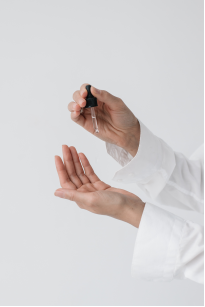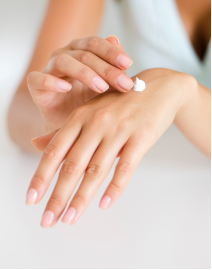Preservatives are anti-microbial substances of natural,bio-fermented and synthetic origin, that are used to inhibit or prevent the growth and activity of microorganisms and thus prevent product deterioration and prolong the storage and product life cyle.
The effect of preservatives on microorganisms can only be produced when they are in direct contact with microbial cells at sufficient concentration depending on the efficacy of different preservatives. In fact, it is mainly due to the effect of preservatives on cell wall and cell membrane. The activity of enzymes affect cell metabolism or the structure of genetic particles in the protoplasm of cells. Most preservatives interact with some components of cells (mainly proteins) after contacting with the cell wall, destroying the protective structure of microbial cells or interfering with the metabolism of cells, inhibiting the synthesis of basic metabolic enzymes in cells or the synthesis of important life substances like nucleic acid and protein. For example, the target of action of quaternary ammonium compounds, phenoxyethanol and ethanol on cells is cell membrane; 2-Bromo-2-nitro-1,3-propanediol acts on sulfhydryl enzyme; The preservatives of formaldehyde and formaldehyde donors act on carboxylase and aminoenzyme in cells; Phenols and aldehydes can denature proteins.
It should be noted that preservatives and bactericides belong to antimicrobial agents, but are named as preservatives and bactericides according to different uses. The main function of preservatives is bacteriostasis. It takes several days to several weeks to reach the state of killing microorganisms at the usual concentration. Fungicides are substances that can effectively kill microorganisms. The main function of bactericide is sterilization. Its purpose is to kill or reduce living microorganisms in a short time when coating on the surface of an object. Its emphasis is on the rapid death of microorganisms. Some disinfectants and industrial disinfectants are listed as "prohibited substances in cosmetics", that is, they cannot be directly added to cosmetics.


The ideal preservative should have the following performances.
1. Wide antimicrobial spectrum
It can inhibit as many as possible microorganisms, including yeast, mold, gram-positive bacteria and gram-negative bacteria.
2. Strong antibacterial activity
The ideal preservative should have broad-spectrum antimicrobial activity at low concentration.
3. Good chemical stability
It should not decompose easily under all extreme temperature and pH conditions during the production and storage of cosmetics because degradation of the preservatives can cause unexpected and unuseful substances,sometimes harmful.
4. Low toxicity
It is safe for people and other animals at the use concentration, non-toxic or low toxicity, no irritation, no allergy,not violating any existing laws and regulations.
5. Good compatibility
Good water solubility, and no chemical interaction with ordinary raw materials and components in cosmetics, in better cases should have good synergic effects with other ingredients.
In fact,it is not likely to have all the required features and behaviors in one single preservative,The antibacterial spectrum of any single preservative is limited. So the selection of preservatives in the actual cosmetics formulation should be based on the nature of preservatives and the type of cosmetics, the composition of cosmetics, and safety requirements, most often in combinations of different preservatives in the same recipes to balance the performance.

Common preservatives
The preservatives can be categorized into natural sourced and synthetic substances,of which the later can be divided further into aldehydes, alcohols,esters, quaternary ammonium salts, acids and their salts, phenols and their derivatives, inorganic salts and others.
1. Aldehydes
Aldehyde preservatives are firstly used in cosmetics. The antibacterial mechanism of aldehyde preservatives is mainly the denaturation of proteins acting on cell membrane and cytoplasm. Most common are formaldehyde and its donors,glutaraldehyde, nowadays they are seldom used in personal care products and cosmetics due to the regulations and its side effects.
2. Esters
Ester preservatives, represented by p-hydroxybenzoate preservatives(Parabens), are recognized as the type of preservatives with broad-spectrum antibacterial effect. Their defects lie in the low solubility in water, which limits their scope of use; P-hydroxybenzoate preservatives have benzene ring structure and poor biodegradability. The antibacterial mechanism of ester preservatives may be to destroy the cell membrane, denature the protein in the cell, and inhibit the activity of microbial cell enzymes, leading to the leakage of cell contents. Common ester preservatives used for cosmetics include methyl,ethyl,propyl parabens,while their use are strictly regulated for certain purposes according to cosmetics regulations in each country.
3. Quaternary ammonium salts
Quaternary ammonium salt bactericide is a kind of quaternary ammonium cationic surfactant, which has antibacterial effect at low concentration, and can kill most kinds of bacteria and some viruses at high concentration. Quaternary ammonium salt has also certain surface activity to moderate the interphase behavior, with good biodegradability, non-pollution to the environment, and safety in use. Its main disadvantage is that it has poor effect on some microorganisms (such as bacterial spores), has many incompatibilities like anionic surfactants and often expensive. Quaternary ammonium salt preservatives are mainly used for sterilization and antisepsis by affecting the osmotic pressure of microorganisms, causing the cell membrane to break, shrink and lose water. Common ones include benzalkonium chloride, Benzethonium chloride, chlorhexidine,quaternium-15, etc.
4. Acids and their salts
The antibacterial activity of acid preservatives is related to pH. Most of them are added into the formula in the form of salt, and the pH of the formula drops to release free acid. Acid preservatives have good biodegradability and relatively high safety to human body. Its main defect is that the antibacterial spectrum is narrow and the applicable pH range is narrow. Its antibacterial mechanism is to dissociate protons through acidic conditions and enter the cytoplasm to destroy the membrane potential, thus destroying the osmotic balance of the cell membrane; It may also play an anti-role through protein denaturation. They are relatively week in killing microbes. Common acid preservatives include formic acid, propionic acid, sorbic acid, benzoic acid, salicylic acid and the salt form(sodium,potassium) etc.
5. Phenols
Phenolic preservatives are one of the earliest used preservatives. The anti-microbial effect of phenolic preservatives is due to their ability to destroy or damage cell walls or interfere with cell wall synthesis. Phenolic fungicides have the advantages of stable properties, simple production process, slight corrosion to most articles, and basically harmless to people at the concentration of use. Its disadvantage is that it has special smell,certain irritation to skin; Long-term contact can discolor textiles and damage rubber articles. In the presence of alkaline pH or organic matter, the anti-microbial activity of phenolic compounds can be reduced. Low temperature and the existence of soap will also reduce its anti-microbial activity. In order to increase the bactericidal ability, reduce toxicity and skin irritation, people have studied and synthesized a large number of phenol derivatives based on phenol.
Nowadays, phenol and cresol have been replaced by a large number of fungicides derived from phenol. General Phenols preservatives include Chlorophene, chloroxylenol, etc.
6. Alcohol and ethers
Its advantages are weak toxicity and good safety. The disadvantage is that the antibacterial spectrum is narrow and the antibacterial effect is relatively weak. They destroy the cell membrane and dissolve the cytoplasm by increasing the fat-solubility, thus playing an antibacterial role. The other part is halogen-containing alcohol ethers, whose antibacterial mechanism is similar to that of organic halogen-based disinfectants, which can denature proteins and inactivate enzymes through the disulfide bond with proteins. Common ones are like benzyl alcohol, phenoxyethanol,1,2-Diols etc., MoisPreserv EP (phenoxyethanol) is now widely used in various formulations of cosmetics,make-up,personal care products due to it good compatibility with other preservatives and synergic performance and also its cost advantages. 1,2-Dios and ethers like MoisPreserv PTG (1,2-Pentylene glycol), MoisPreserv HDO(1,2-Hexanediol),MoisPreserv EHG(Ethylhexyl glycerine),MoisPreserv CPG (Chlorphenesin) now become popular due to its multifunctional features,they are also good humectants in cosmetics and personal care formulations.
7. Oxazolidines
Oxazolidine antibacterial agents have a wide anti-bacterial spectrum, are active against bacteria, molds, viruses and algae, and are applicable to a wide range of pH. The mechanism of action of these preservatives and medical oxazolidone antibacterial agents may be similar, and inhibit the earliest stage of bacterial protein synthesis. General Oxazolidine preservatives include 7-ethyl bicyclooxazolidine.
8. Inorganic salts
Thiomersal, Silver chloride deposited on titanium dioxide
9.Other types
Triclocarban, Methylisothiazolinone(CIT/MIT), Sodium N-( hydroxymethyl) glycinate,MoisPreserv pHAP(P-Hydroxy acetophenone) etc.
Check that your browser version is too low,
In order not to affect the normal use of the site, please directly upgrade your browser, or use other browsers such as: firefox, Google.